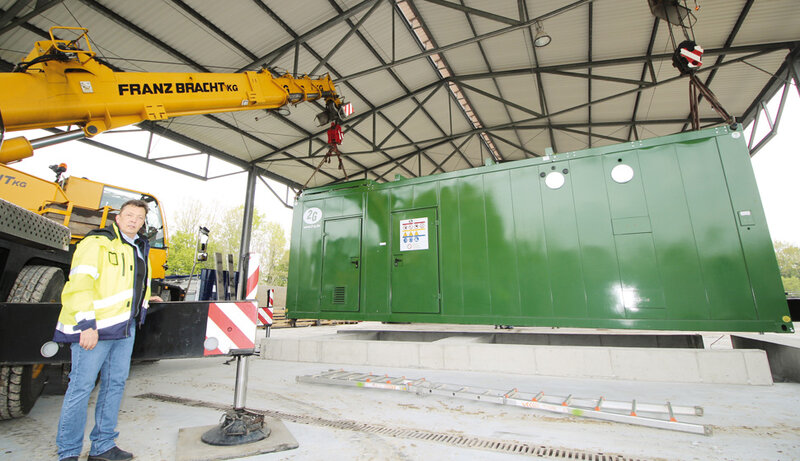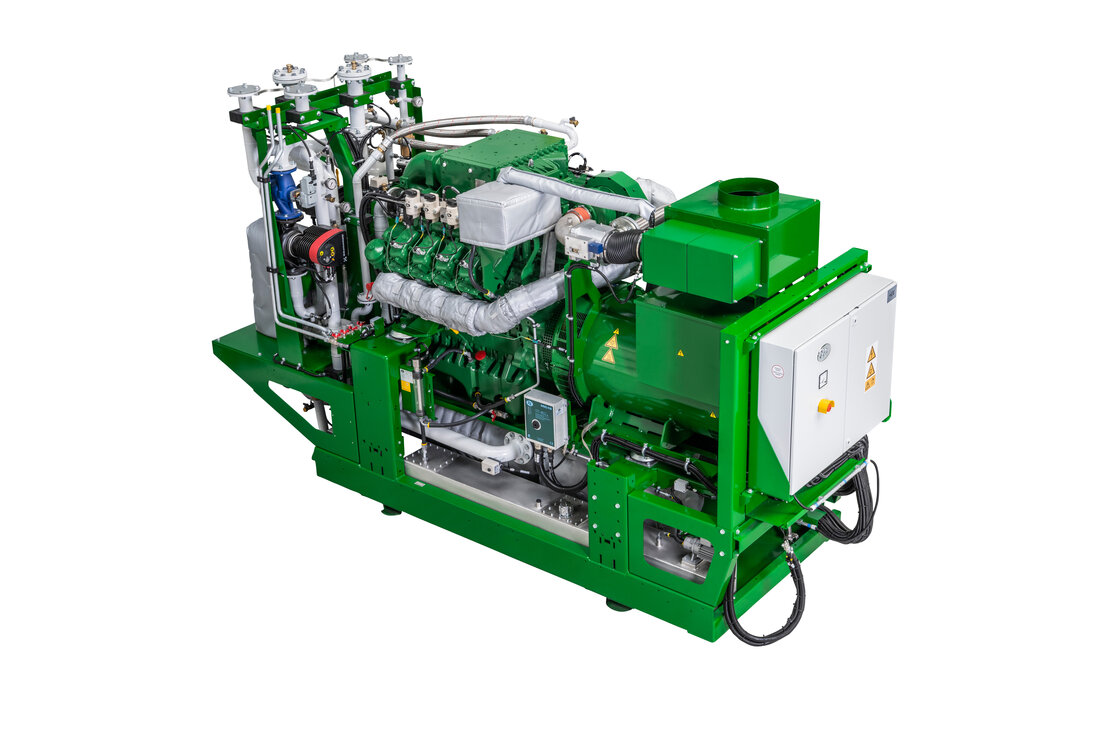More efficient energy use means reduced energy costs
Central sewage plant in Lippstadt uses revolutionary energy concept
Facts & figures

The central sewage plant in Lippstadt was built in 1986 and was designed to clean the sewage from around 130,000 residents. A great deal of electric and thermal energy is required to clean this sewage and to operate the sewage plant of the city of Lippstadt in general. The annual costs of supplying basic power and for disposing of the resulting sewage sludge are therefore high.
With the commissioning of an agenitor 408 (electric output of 360 kW and thermal output of 381 kW) in April 2017 and a patruus 400 (electric output of 400 kW and thermal output of 504 kW) last November, the energy and disposal costs for the sewage sludge were reduced considerably, since the energy concept behind the installation of both 2Gs is an economic and ecological revolution.
The patruus, which is operated using natural gas, is tasked with drying the resulting sewage sludge to a good 90 °C in partnership with a drying system. By drying the sewage sludge, it loses more than three quarters of its weight. With an annual accumulation of around 5,000 tons of sewage sludge at the sewage plant in Lippstadt alone the weight of the sludge can thus be reduced by around 1,200 tons.
But it‘s not just the weight that sinks; the volume is also reduced. This results in considerable reductions to transport costs. However, drying has an additional benefit: By removing the liquid contained within the sewage sludge, the energy value of the material increases. The resulting material is primarily of interest to thermal recyclers who can generate electric and thermal energy from it. And it could provide a solution for the period following the decision already made in politics to deactivate all German coal-fired power plants. For example, one could use the dried sewage sludge as a combustible material for the heating ovens at cement factories.


The electric energy generated by the patruus 400 covers the energy needs of the sewage plant. The 2G was installed in a container under the roof that had previously served as sludge storage without any need for maintenance.
The second CHP, an agenitor 408, replaced an old CHP. The agenitor was also installed in a container that was placed next to the two digestion towers of the sewage plant. The CHP is operated using the sewage gas produced in the digestion towers. The electric energy generated by the CHP is used to operate the sewage plant and covers around 80% of power needs. The thermal energy generated supports the biological decay processes in the digestion towers. By using the highly efficient agenitor 408, the amount of energy generated for the same operating hours can be increased by around 500,000 kWh compared to the old CHP. This means cost savings of 90,000 euros annually.
Both combined heat and power units contribute considerably to reducing the energy costs of the sewage plant, thus also helping to protect the environment.




